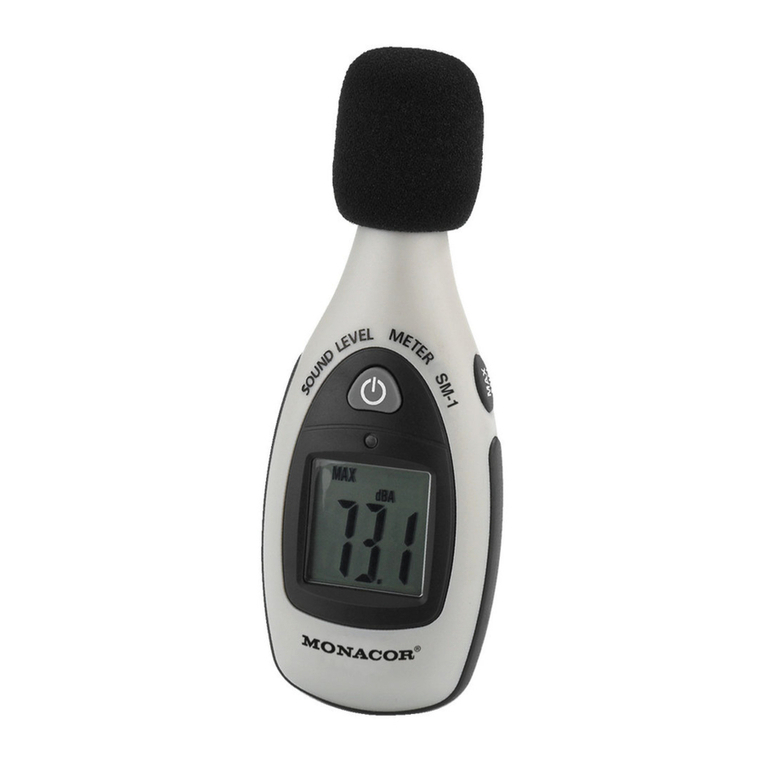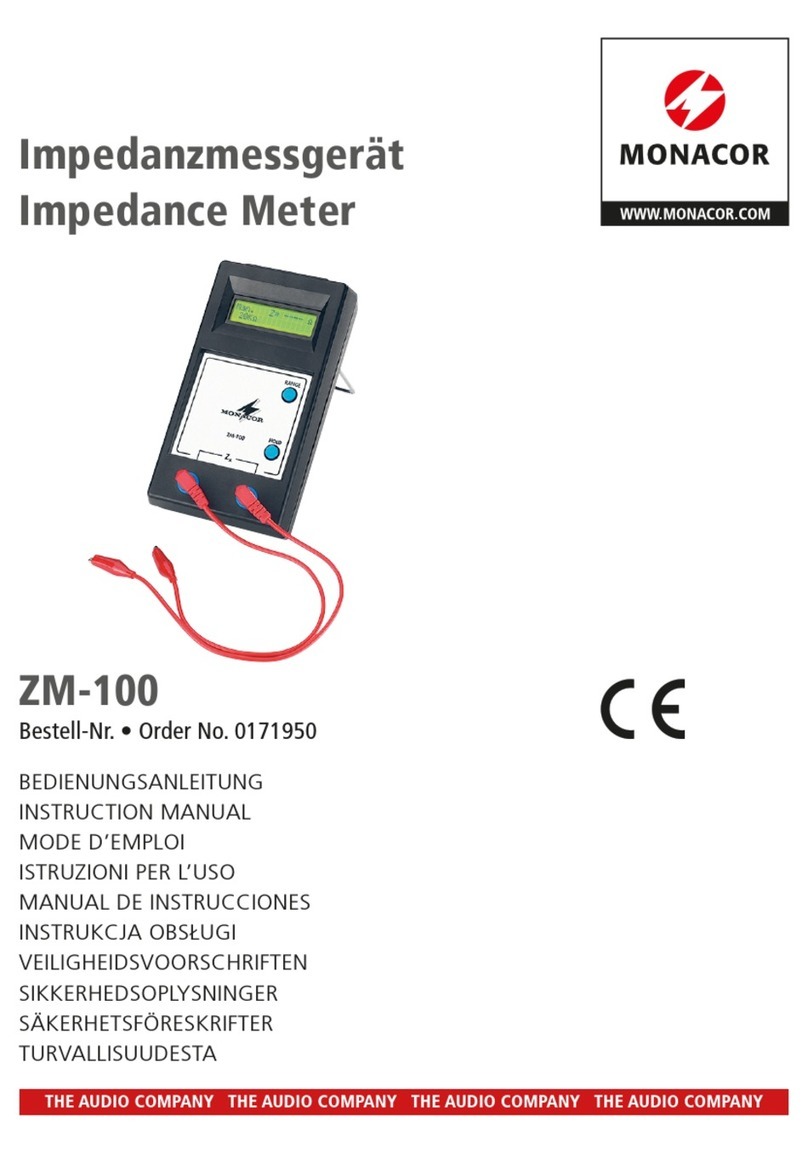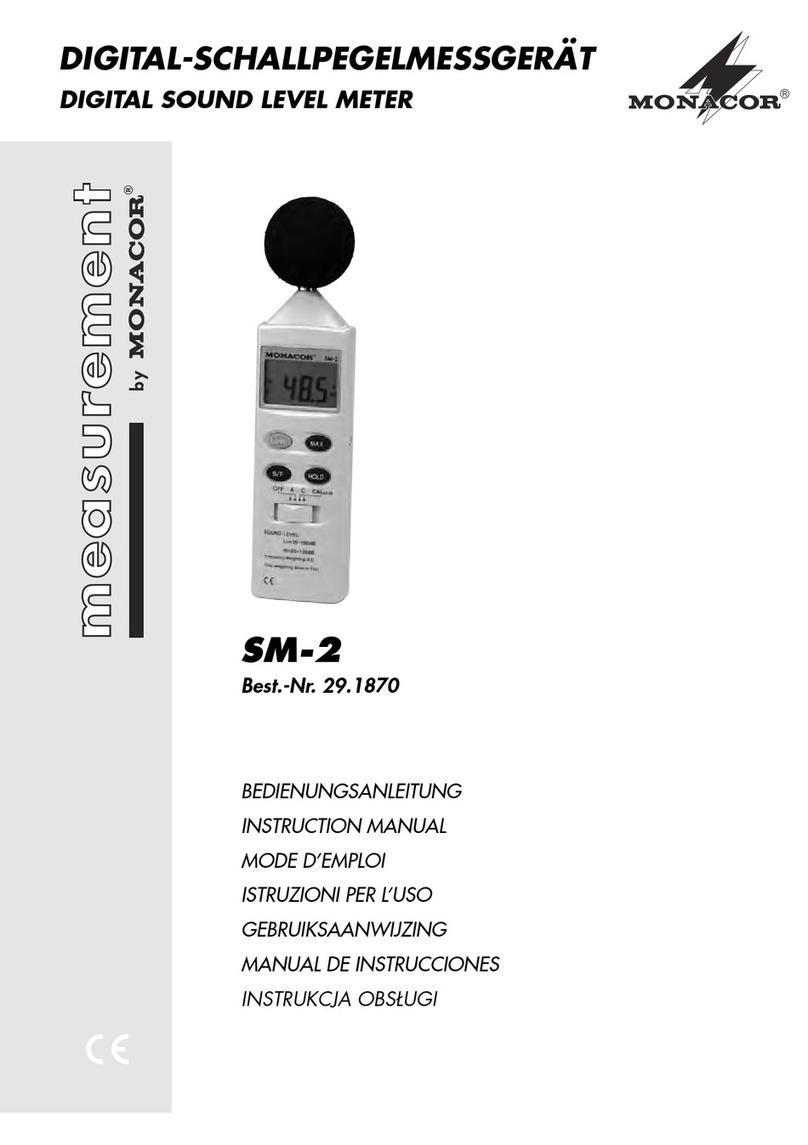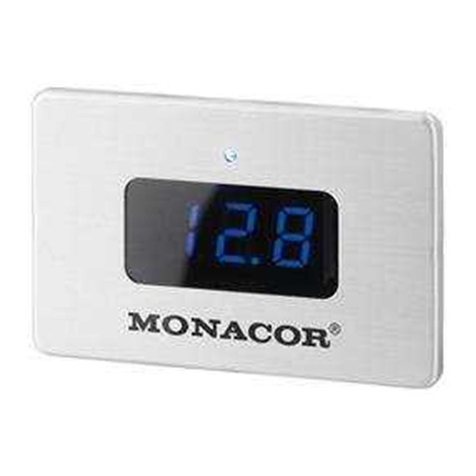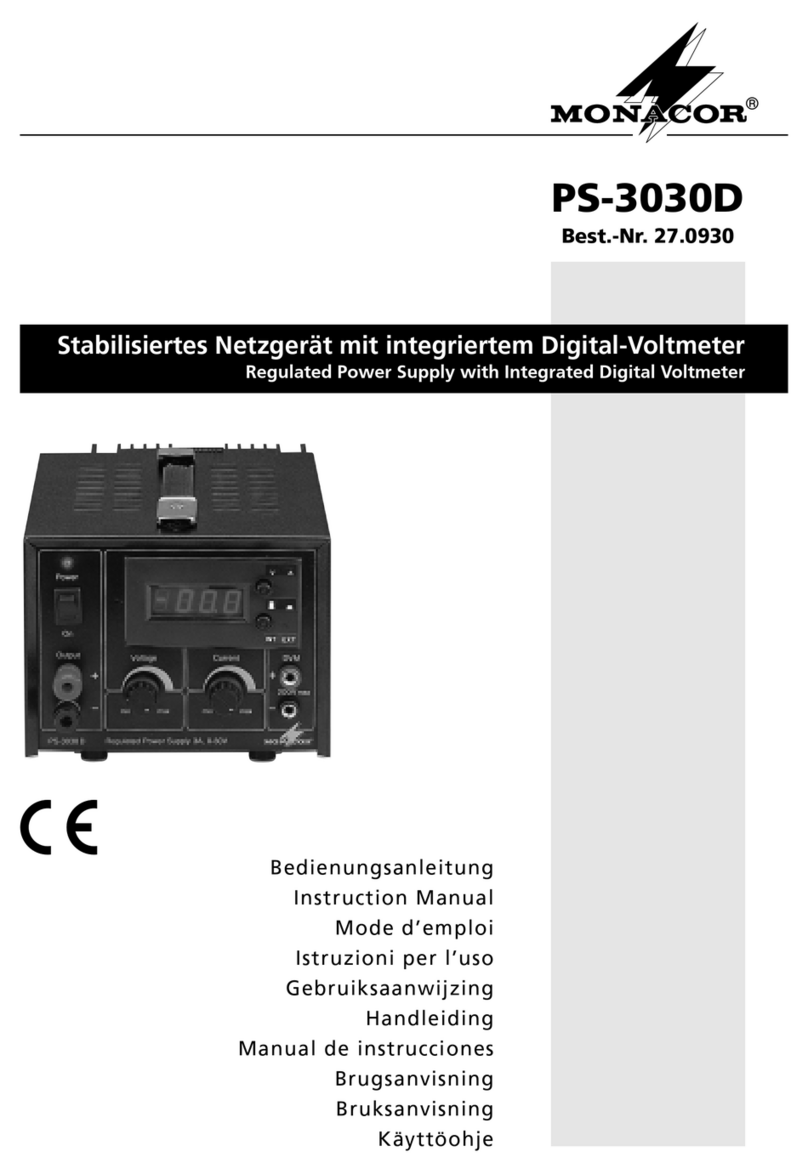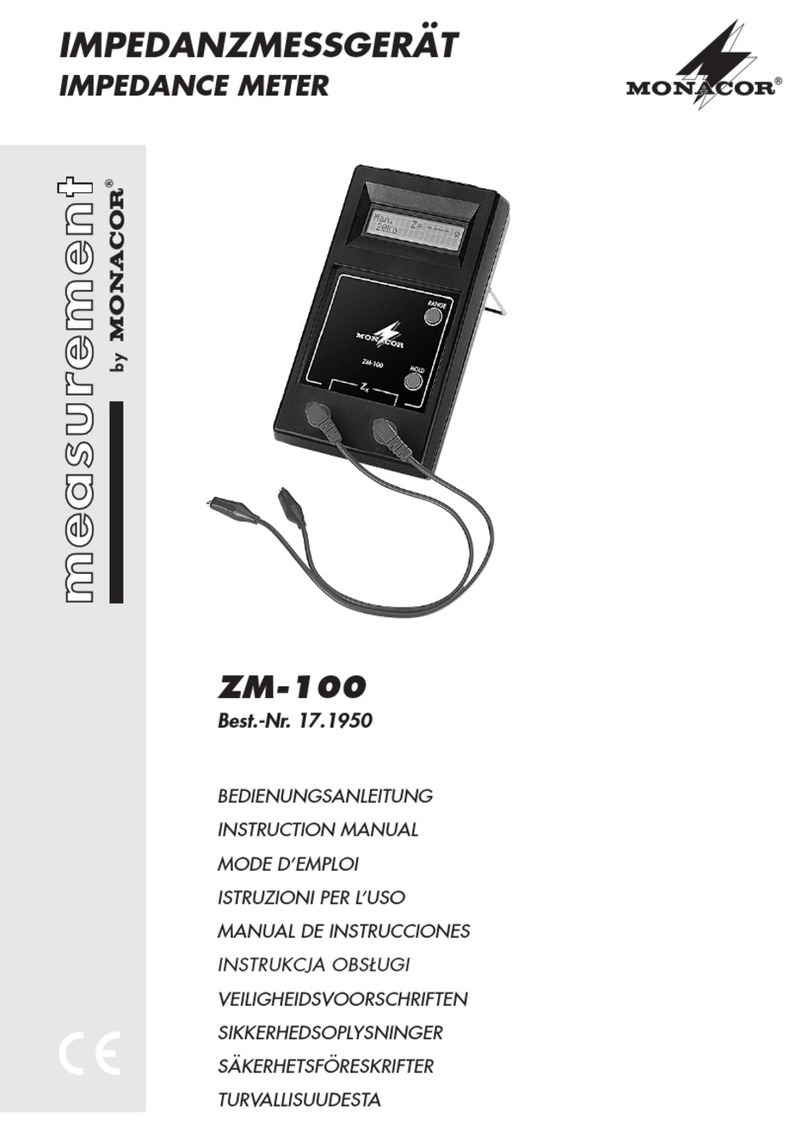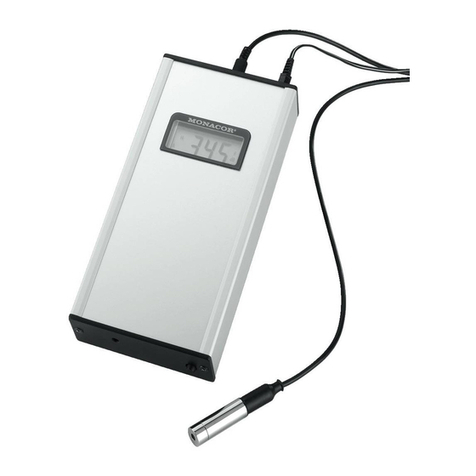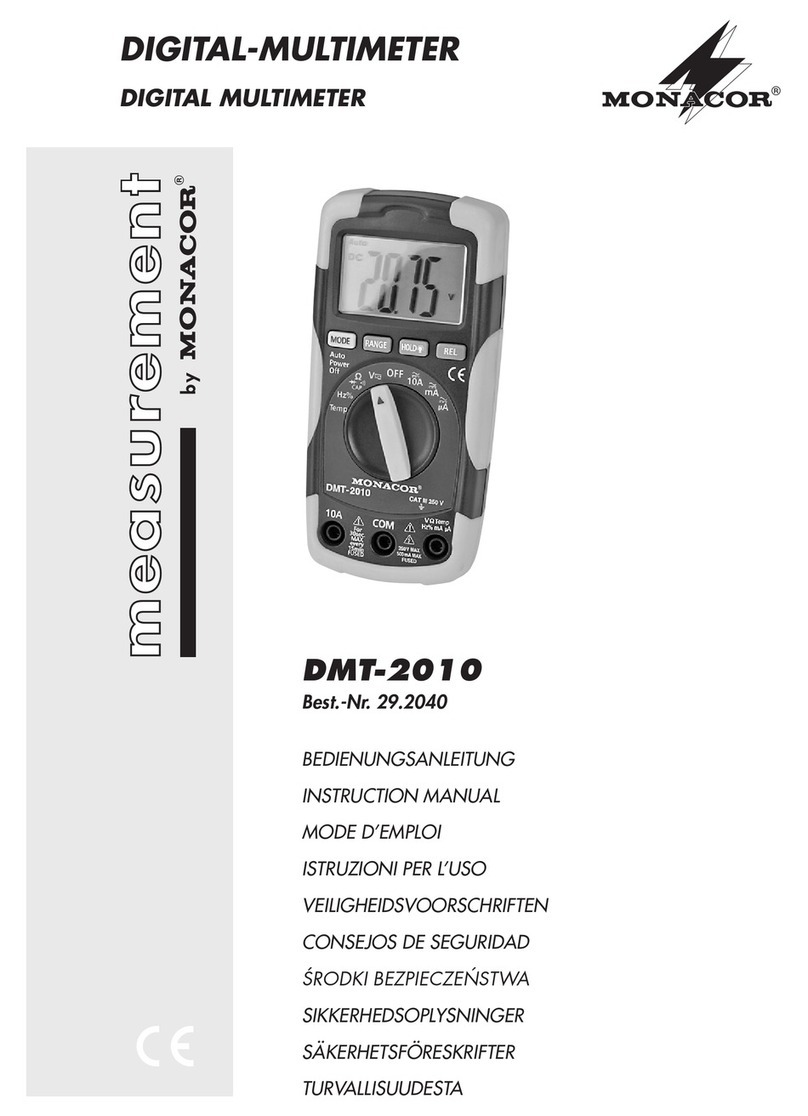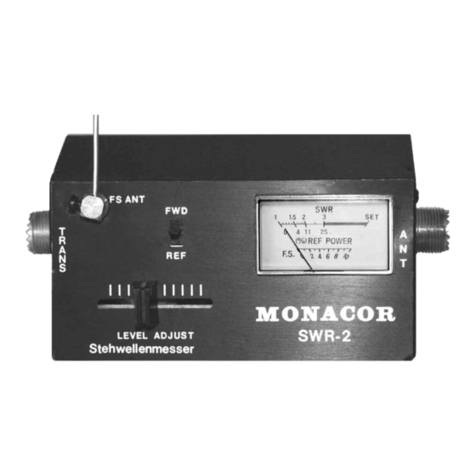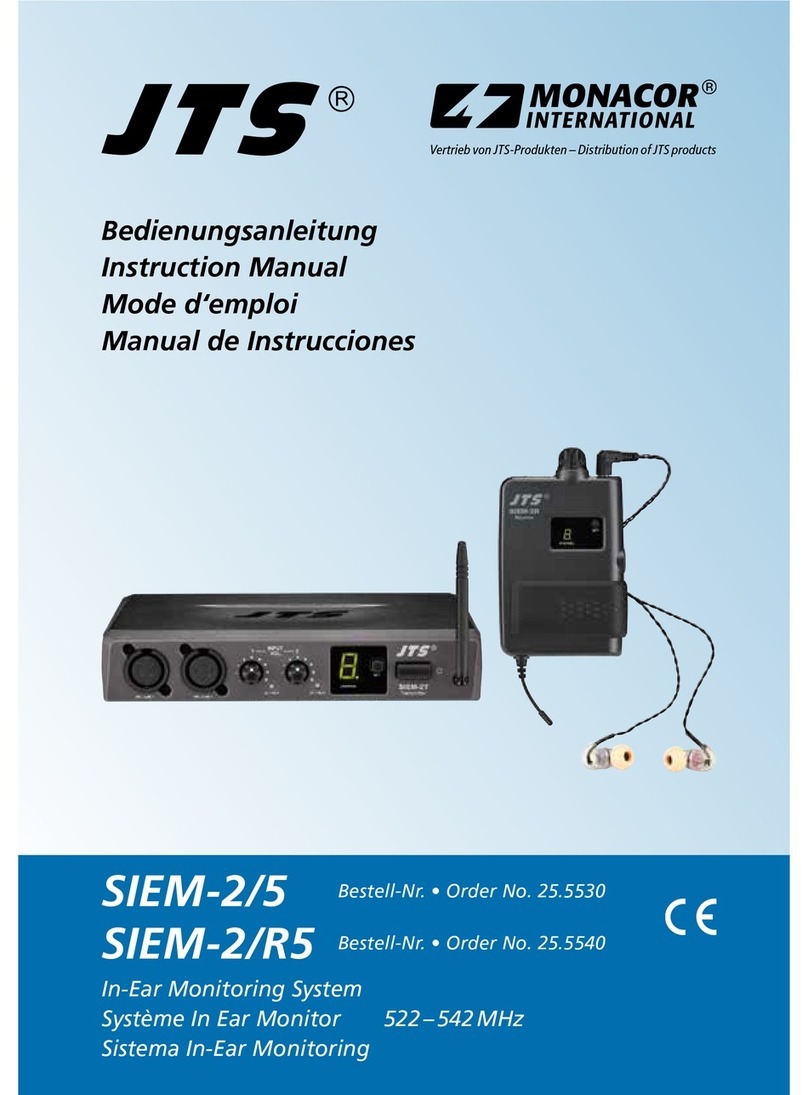
9
Français
3)
Pour monter l’appareil sur un pied, la prise filetée
(10) avec filetage 6,3mm /¼” peut être utilisée.
4)
Après le fonctionnement, éteignez toujours l’ap-
pareil sinon la batterie est inutilement utilisée;
mettez l’interrupteur (9) sur «OFF».
En cas de non-utilisation prolongée, il
convient de retirer la batterie car elle pourrait
couler et endommager l’appareil.
5 Mesures de niveau sonore
1) Pour une mesure précise, vérifiez auparavant le
calibrage : mettez l’interrupteur (9) sur la posi-
tion «CAL» ; l’affichage doit indiquer 94,0dB. Si
ce n’est pas le cas, à l’aide d’un petit tournevis,
réglez le potentiomètre trimmer (5) de telle sorte
que 94,0dB s’affiche.
2)
Si le niveau sonore doit être mesuré selon la
perception de l’oreille humaine, mettez l’inter-
rupteur sur la position «A». Sur la position «C»,
le niveau sonore physique (linéaire) est mesuré.
3)
Tenez l’instrument pour effectuer la mesure
à l’horizontale, le micro (1) en direction de la
source sonore.
4) Après l’allumage, la plage de mesure inférieure
35– 100dB est toujours réglée ; à gauche, sur
l’affichage, «Lo» (low = faible) est affiché.
Pour des mesures au-delà de 100dB, «OVER»
s’affiche en bas à droite ; avec la touche Lo/Hi (3)
commutez dans la plage supérieure 65–130 dB ;
«Hi» (high = élevé) s’affiche à la place de «Lo».
Si dans la plage supérieure, la mesure est
inférieure à 65dB, «OVER» apparaît également.
Avec la touche Lo/Hi, revenez dans la plage in-
férieure.
5) Après l’allumage, la dynamique de mesure est
réglée sur des niveaux se modifiant rapidement.
Sur l’affichage, à droite, «F» (fast = rapide) s’af-
fiche ; pour mesurer des niveaux se modifiant
plus lentement, commutez avec la touche S/F (4)
sur la seconde plage de dynamique : l’affichage
passe alors de «F» sur «S» (slow = lentement).
6)
Pour conserver l’affichage de la valeur de mesure
momentanée, enfoncez la touche HOLD (8). En
haut sur l’affichage, «DATA HOLD» est visible.
Pour revenir à la valeur de mesure actuelle, en-
foncez une nouvelle fois la touche HOLD.
7) Si le niveau maximal doit être constaté, enfoncez
la touche MAX (6). En haut sur l’affichage, «MAX
HOLD» est visible. Maintenant la valeur de niveau
le plus fort qui apparaît après la pression sur la
touche MAX est gelée. Pour désactiver la fonction,
enfoncez la touche MAX une nouvelle fois.
Conseils :
a Le niveau sonore mesuré dépend grandement de la
distance entre l’appareil et la source. Lors de la mesure,
une distance définie doit être conservée (par exemple
pour des mesures de haut-parleurs : 1m) ou la distance
à laquelle la mesure a été effectuée doit être indiquée.
b Le niveau sonore dépend également de l’angle de
positionnement par rapport à la source. Il peut être
nécessaire de mesurer les niveaux sous plusieurs angles
(à la même distance) et d’étudier le comportement de
dispersion sonore de la source.
5.1 Prélever le signal micro ou
la tension DC proportionnelle au niveau
Les tensions suivantes se trouvent à la prise de sortie
(7) : elles peuvent être prises pour une commande,
fonction du niveau, ou une étude ultérieure. Reliez
une fiche jack 3,5 mâle 3 pôles à cette prise.
Signaux à la fiche jack reliée
pointe – corps
signal micro
dans la plage inférieure «Lo» 38mV/dB
dans la plage supérieure «Hi» 8,3mV/dB
impédance 100 Ω
bague – corps
tension DC proportionnelle au niveau 10 mV/dB
impédance 100 Ω
6 Caractéristiques techniques
Affichage : � � � � � � � � � � LCD 17 mm, 3½ positions
Plages de mesure
Lo (low) : � � � � � � � � � � 35 – 100 dB
Hi (high) : � � � � � � � � � 65 – 130 dB
Résolution : � � � � � � � � 0,1 dB
Précision : � � � � � � � � � � � ±1,5 dB à 94 dB, 1 kHz
Bande passante :� � � � � � 31,5 – 8000 Hz
Pondération niveaux : � � A ou C
Type micro :� � � � � � � � � � micro électret
Prise de sortie (signaux à la fiche mâle)
pointe – corps : � � � � � signal micro, impédance 100
Ω
bague – corps :� � � � � � tension DC proportionnelle au
niveau 10 mV/dB, 100
Ω
Température fonc� : � � � � 0 – 40 °C
Alimentation : � � � � � � � � 1 × batterie 9 V
Dimensions, poids : � � � � 63 × 253 × 30 mm, 250 g
Tout droit de modification réservé.
Notice d’utilisation protégée par le copyright de
MONACOR
®
INTERNATIONAL GmbH & Co. KG. Toute
reproduction même partielle à des fins commerciales
est interdite.
